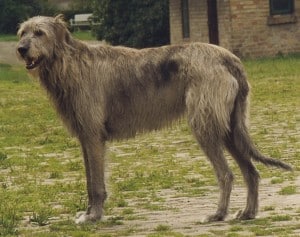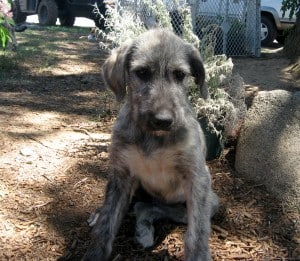
Irish Wolfhounds are best suited for suburban or rural regions where they can get enough exercise. They should not be left alone for long periods of time, as this can make them timid and destructive. Irish Wolfhounds should be socialized to other animals, children and strangers at an early age to ensure that they are not overly cautious. This breed is happiest when surrounded by its family, to whom it is exceptionally devoted.
Although the Irish Wolfhound is trainable, they are not particularly easy to train. It is necessary that training be done patiently and gently.The Irish Wolfhound is a very large animal, reaching an average of 34 inches (per the AKC standard) in height and weighing as much as 120 pounds. Larger dogs are not uncommon. They have a wiry, rough coat that usually appears in shades of gray, brindle, black, white, fawn and red.In its native Ireland, the Irish Wolfhound is well known for its ability to bring down large game such as wolf, boar and Irish Elk. In 391 BC, several Irish Wolfhound were brought by Celts to Rome, where the Romans gazed on the animals in wonder.

Irish Wolfhounds should be groomed biweekly. They should be trimmed a couple of times a year. Irish Wolfhounds require a great deal of exercise, such as long walks and/or the opportunity to run in a secure area several times daily.Some common health problems related to the Irish Wolfhound include osteochondritis dissecans, bloat, osteosarcoma and progressive retinal atrophy. Like other large breeds, the Irish Wolfhound is prone to hip and elbow dysplasia.
